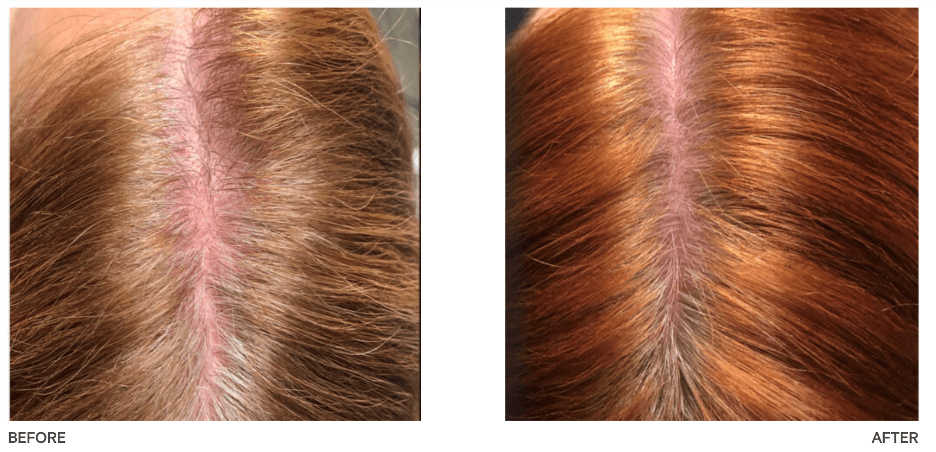
Is hair loss preventing you from living life to the fullest? If so, you may be a good candidate for nonsurgical laser hair restoration. KeraLase is a relatively new hair loss treatment that combines cutting-edge laser technology with a nutrient-rich serum to activate hair growth. The result is thicker and fuller hair that will turn up your self-confidence… and turn heads!
How does hair restoration work? Listen to what Dr. Jonathan Weiler has to say about KeraLase hair restoration and learn more about this innovative treatment below:
Why Isn’t My Hair Growing Back?
According to the American Academy of Dermatology, more than 80 million men and women experience hair loss. While some hair loss is normal, noticeably thinner hair or bald spots can signal an underlying issue. Here are some key factors that may contribute to abnormal hair loss:
- Age: As we age, hair follicles stop growing, and hair growth slows. This causes thinning, receding, and balding.
- Heredity: Genetics can play a role in hair loss. You may inherit a predisposition to balding, referred to as male or female pattern baldness.
- Hormones: For women, hormonal changes, such as menopause or switching birth control methods, may contribute to hair loss.
- Stress: Chronic or extreme stress can impair hair follicles and prevent new growth.
- Medical conditions: Health issues such as anemia, under-active thyroid, diabetes, and lupus are known to impede hair growth.
- Medications: Hair loss can be a possible side effect of certain medications.
- Cancer treatment: Chemotherapy patients may temporarily experience hair loss.
- Nutrition: A nutritional deficiency may impact hair structure and prevent hair growth.
- Hair care: Harsh hair treatments such as coloring, perming, or relaxing your hair can trigger hair loss.
How Does Laser Hair Restoration Work?
Laser hair restoration is a noninvasive alternative to hair transplant surgery. It works by using low-level lasers to target hair loss on the entire scalp. The lasers help stimulate blood flow to “awaken” inactive hair follicles and promote the growth of new hair follicles. In contrast to hair transplant surgery, patients appreciate that laser hair treatments are convenient, pain-free, carry no side effects, and require no downtime. In addition to laser hair restoration, many patients opt to utilize laser therapy for hair removal, which you can learn more about in this related blog post.
Laser Hair Restoration vs. Hair Transplant
Think of laser hair restoration as a natural hair growth treatment that thickens the hair and prevents further hair loss. It leverages light energy to stimulate hair follicles and strengthen the hair shaft. Conversely, during a hair transplant, hairs are taken from a donor site, harvested, and then transplanted into balding or thinning areas of the scalp. Scarring is more likely to occur with a hair transplant vs. a laser hair treatment. As a natural, non-invasive alternative to hair growth, laser hair therapy carries fewer risks than a hair transplant.
What is Unique About KeraLase Hair Restoration?
KeraLase combines the cutting-edge Lutronic Ultra™ laser with KeraFactor®, a serum that contains growth factors and proteins that help stimulate collagen production, activate hair restoration, and stop hair loss. Pairing our controlled laser with a super-packed, nutrient-rich serum helps trigger hair growth while improving hair density. It’s a powerhouse combination treatment that gets to the root of hair loss while delivering voluminous and long-lasting results.
What Happens During KeraLase Hair Treatment?
During your KeraLase treatment, we use the Ultra laser device to deliver controlled, precise energy to targeted areas. The laser creates tiny microchannels in the scalp, then we apply the KeraFactor serum to your scalp. These tiny microchannels enable your hair follicles to absorb the growth factors within the nutrient-rich serum. The best part is that KeraLase treatments are painless and take only 15 minutes.
Does KeraLase Hair Restoration Really Work?
While laser hair restoration is still a relatively new hair loss solution, it gets results! Men and women are able to achieve natural hair regrowth and stop hair loss progression. We typically recommend a series of 6 KeraLase treatments performed every 2 weeks for optimal results. We do find that patients in the earlier stages of hair loss achieve better results with laser hair restoration than those with advanced stages of hair loss. Most patients can expect hair to become naturally fuller, lusher, and healthier over time.

How Long Do Laser Hair Restoration Results Last?
Your laser hair restoration results should be long-lasting, especially if you repeat sessions periodically to help maintain your lustrous locks. Results should become even more noticeable with subsequent KeraLase treatments.
A full head of hair can do wonders for your self-confidence! Are you ready to reach out to our team to explore a customized laser hair restoration solution like KeraLase? Please request a consultation online, or call us at (225) 399-0001 to schedule an appointment.

Leave a Reply